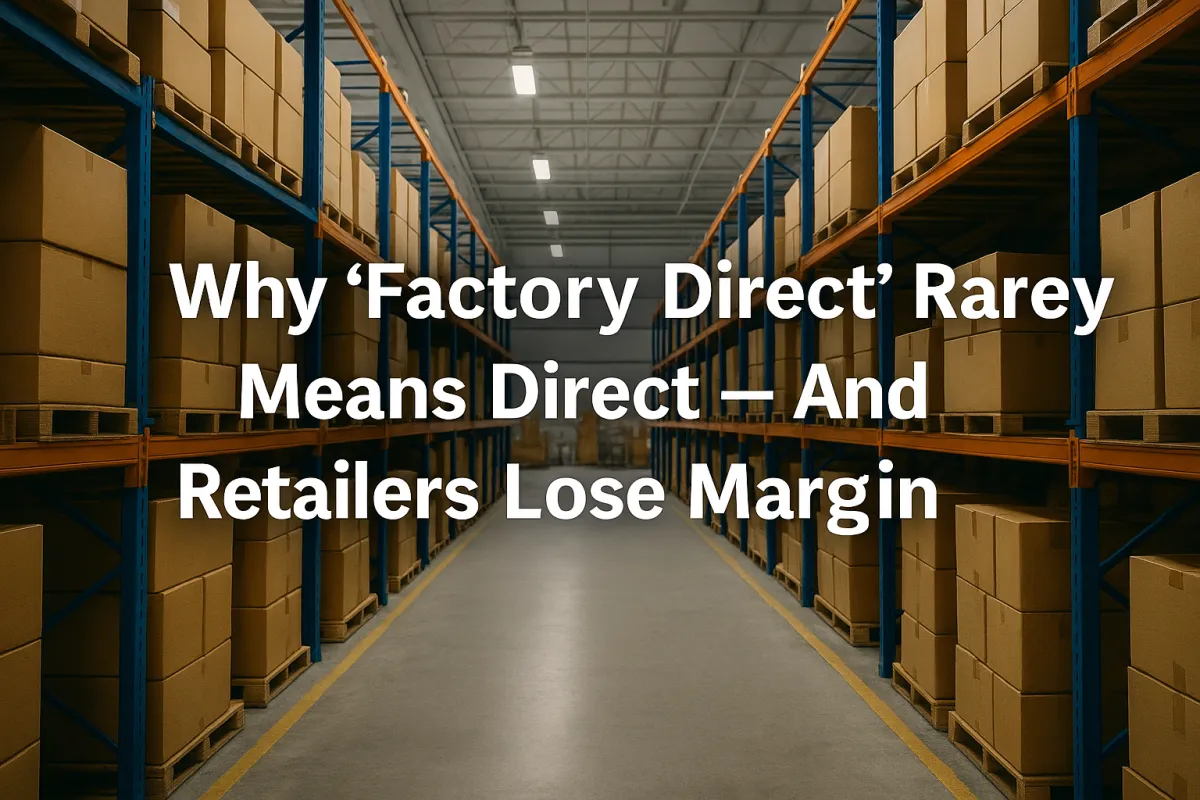
Why “Factory Direct” Rarely Means Direct — And How Retailers Lose Margin
For years, retailers have been told that buying “factory direct” is the safest, cheapest, and most reliable way to source products from China.
The truth is far messier.
Across Alibaba, Made-In-China, and even supplier websites that look like real factories, 70–80% of suppliers are intermediaries masquerading as manufacturers.
Some are trading companies. Some are agents. Some are just freelancers behind a laptop using a factory’s photos.
And every one of them introduces:
hidden margin loss
inconsistent quality
unpredictable lead times
communication breakdown
zero accountability
If you’ve ever had stock suddenly change quality, pricing jump for no reason, or shipments delayed with vague excuses — you’ve felt the effects of this firsthand.
Why Middlemen Hide Behind “Factory Direct”
Because it sells.
Retailers see “factory direct” and assume:
lower cost
tighter quality control
direct communication
better negotiation power
But intermediaries know this.
So they build legitimate-looking profiles, showroom photos, websites — all designed to create the illusion of a real manufacturing line.
Meanwhile:
your products are being subcontracted
quality changes without warning
components are swapped based on cost
communication goes through multiple layers
By the time the shipment reaches you,you’re four steps removed from the people actually making your product.
The Margin Leak No One Talks About
Every middleman takes their cut.
Quietly. Invisibly. Consistently.
I’ve seen retailers lose 15–30% of margin per shipment without ever noticing.
How?
Because the retail price stays the same…
but production cost fluctuates.
You’re charged more when the intermediary needs more profit.
You’re charged less when they need your next order.
Either way, you’re not in control.
How to Protect Yourself (And Your Margins)
The solution isn’t to avoid China.
It’s to avoid opacity.
Here’s what real control looks like:
1. Direct factory relationships — verified, not assumed
Seeing photos isn’t enough.
You need someone on the ground confirming the relationship.
2. Transparent costing — not “all-in pricing”
You should know the production breakdown, not receive a single inflated number.
3. Quality checks throughout production
Not one sample.
Not one final inspection.
Three checkpoints minimum:
pre-production
mid-production
pre-shipment
4. Long-term manufacturing partnerships
Not one-off orders.
Partnerships deliver better cost, better quality, and better consistency.
5. Someone in China representing you, not the factory
The factory has its own priorities.
You need someone whose job is to protect yours.
The Bottom Line
“Factory direct” is one of the most misleading phrases in global manufacturing.
If you want to protect your margin, quality, and supply chain — you need real relationships, verified processes, and boots-on-the-ground oversight.
It’s not about finding a factory.
It’s about finding the right factory, building a partnership, and never leaving your margins to chance.
